Sintra is filled with historical landmarks and intriguing attractions, but its most iconic structure has to be the Pena Palace. With its brightly colored exterior and intricate details, this building seems straight out of a fairytale—and the vast gardens surrounding it only add to the allure.
Sintra is one of Portugal’s most enchanting destinations, filled with iconic landmarks, lush gardens, and a rich royal history. The VIP Sintra Tour from Lisbon is the perfect way to explore this magical town, ensuring you experience the very best Sintra has to offer in one unforgettable day.
Here’s all the top secrets of the Pena Palace you need to know before visiting.
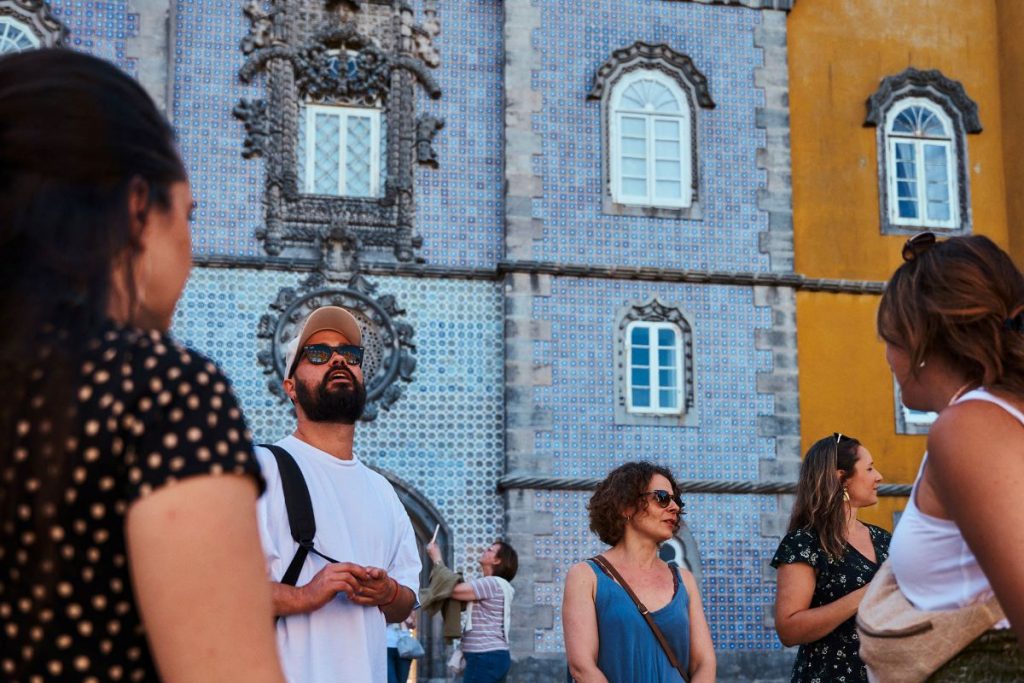
Why Choose the VIP Sintra Tour from Lisbon?
This exclusive tour provides you with VIP access to the region’s most stunning landmarks, including the world-famous Pena Palace, the Palácio Nacional de Sintra, and the mystical Quinta da Regaleira. Enjoy a seamless experience, with no long lines and a knowledgeable guide who will share fascinating stories about Sintra’s history and architecture.
What makes this tour stand out?
- VIP Pre-Reserved Access: Bypass the crowds and gain exclusive entry to Sintra’s top attractions.
- Personalized Experience: A small group tour ensures that you get personalized attention, with a guide to answer all your questions.
- Breathtaking Views: Travel through Sintra’s scenic hills and enjoy spectacular panoramic views of the town and surrounding countryside.

What You’ll See and Do on the VIP Sintra Tour
The VIP Sintra Tour from Lisbon offers you an insider’s perspective of Sintra’s most iconic attractions. Here’s a detailed look at what you can expect:
- Pena Palace: Explore the fairy-tale castle perched on top of the Sintra mountains. With its vibrant colors and eclectic architectural style, the palace is a must-see. You’ll enjoy exclusive access and a guided tour of both the palace interior and its spectacular gardens.
- Palácio Nacional de Sintra: This historic palace, located in the heart of Sintra, is known for its beautiful mix of Moorish and Manueline architectural styles. Inside, you’ll find magnificent rooms and stunning tiles that tell the story of Portugal’s royal past.
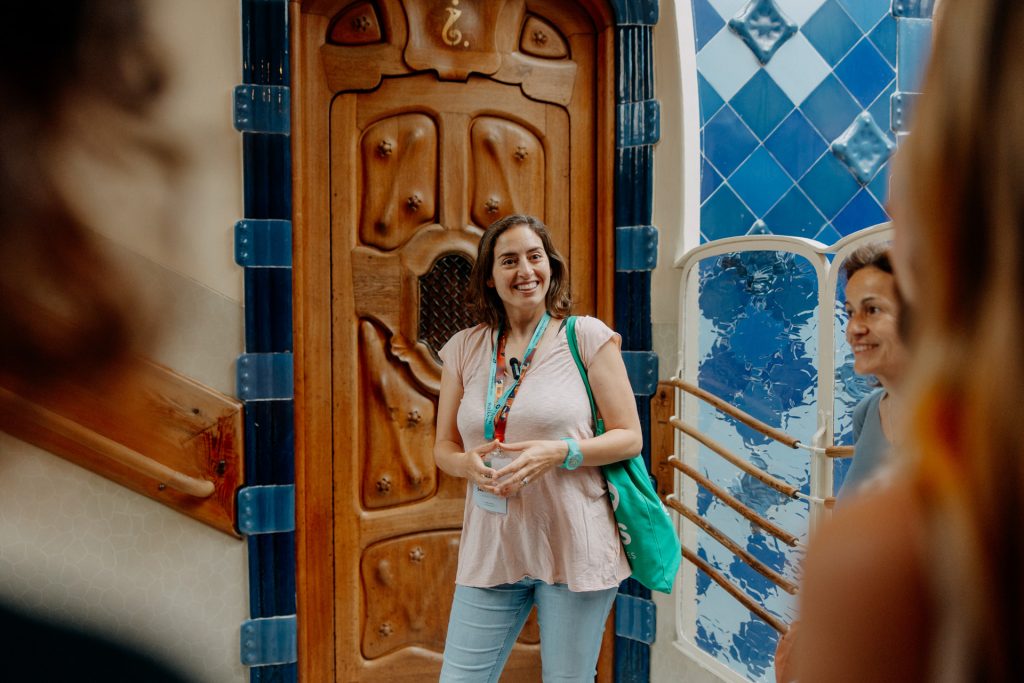
- Quinta da Regaleira: Roam through this mysterious estate, renowned for its enchanting gardens, hidden grottoes, and the famous Initiation Well. The property’s unique and symbolic features make it one of Sintra’s most fascinating landmarks.
- Seteais Palace Gardens: Stroll through the picturesque gardens of Seteais Palace, which offer fantastic views over Sintra’s valleys and mountains.
- Sintra Town: Wander through the charming streets of Sintra, a UNESCO World Heritage town. You’ll have time to explore local shops, restaurants, and cafes in this picturesque town.

A brief history of the Pena Palace
The history of the Pena Palace covers nearly a millennium, and like many noteworthy places in Portugal, it’s linked to both religion and royals.
Here’s a brief introduction to each era in this beautiful building’s past, from its Medieval origins to modern restoration projects.
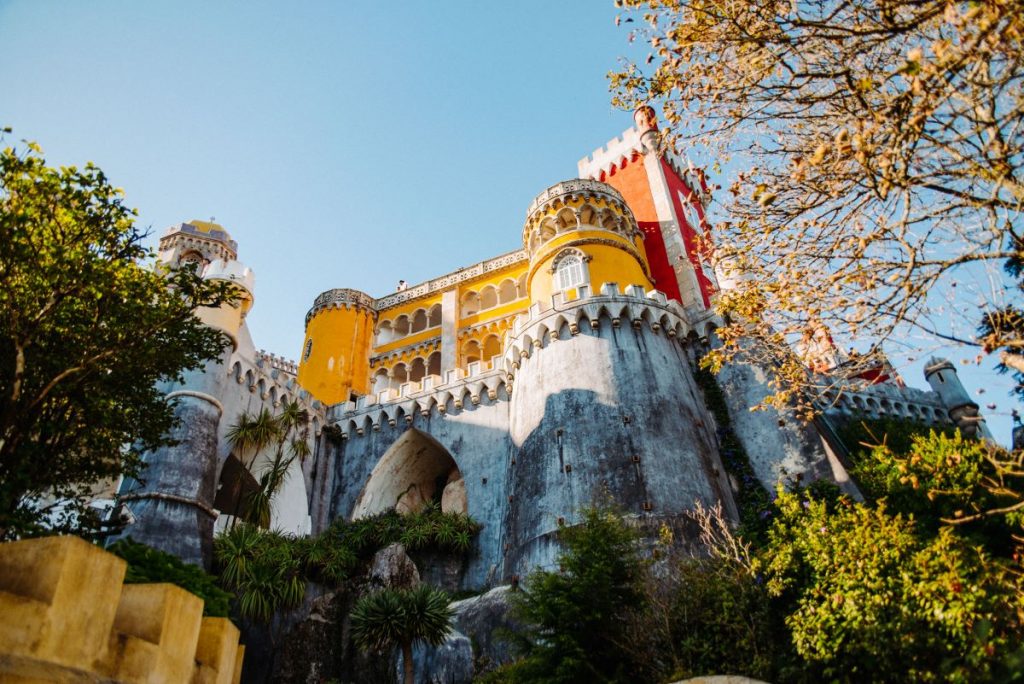
A hilltop sanctuary
The very first structure on the site that the Pena Palace now occupies was a 12th-century chapel built in honor of Nossa Senhora da Pena (Our Lady of Pena). In the early 16th century, King Manuel I decided to build a monastery in the same place, incorporating the original chapel.
The Real Mosteiro de Nossa Senhora da Pena (Royal Monastery of Our Lady of Pena) remained in use for more than three centuries, even after much of it was destroyed by the 1755 earthquake. It wasn’t until 1834, when religious orders were abolished following Portugal’s Liberal Revolution, that the monastery shut down.
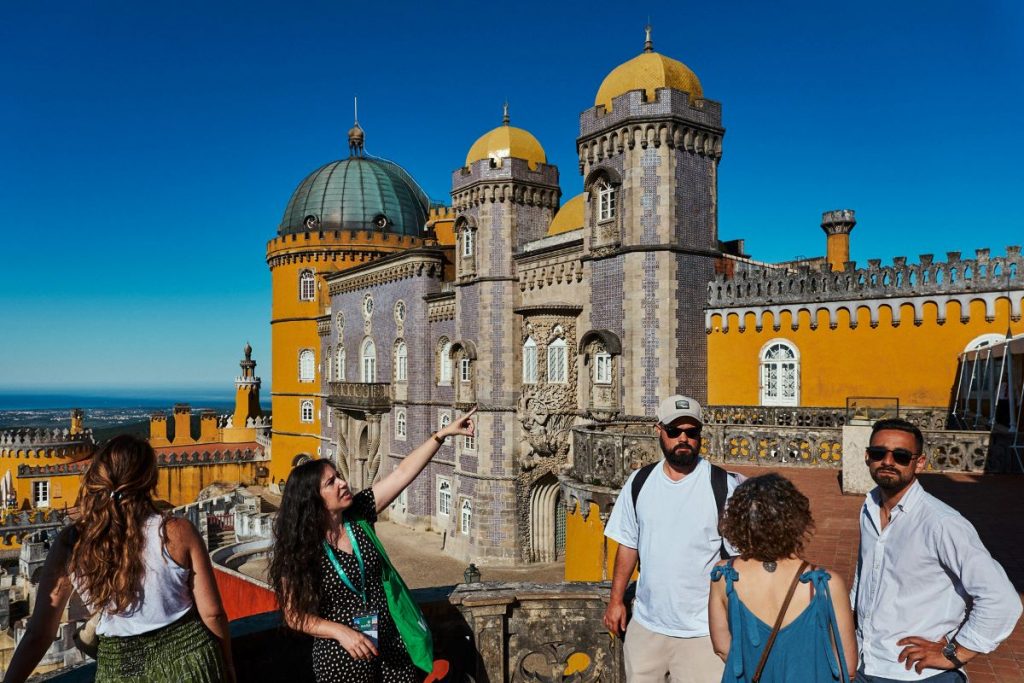
A royal residence
In the late 1830s, Queen Maria II married Fernando II, who became the king of Portugal upon the birth of their first son. A renowned patron of the arts, the new king decided to buy the abandoned monastery and make it into a summer home. He set to work restoring and expanding it with the help of German engineer Baron Wilhelm Ludwig von Eschwege.
After the queen died in 1853, Fernando continued to work on the palace. He remarried in 1869, and his second wife, Elise Hensler, assumed the title of Countess of Edla. Today her legacy is evident in the alpine-style Chalet da Condessa d’Edla located within the palace grounds.

A national monument
After Fernando II died in 1885, the property was left to his wife and then sold to the state, but the royal family kept using it as a summer home. This continued until 1910, when the Portuguese Republic was established and the royal family went into exile. The Pena Palace became a national monument and museum shortly thereafter.
Restoration work was carried out on the palace and gardens throughout the following century. One of the most notable projects occurred in the 1990s, when the building was repainted to restore the faded red and yellow walls to their former glory. Today the property is managed by Parques de Sintra, a publicly funded company that maintains the city’s cultural landmarks.

Architectural features and interesting details
Part of what makes the Pena Palace so interesting is its eclectic mix of architectural styles and influences. It’s considered one of the foremost examples of Portuguese Romanticism, incorporating Neo-Gothic, Neo-Manueline, and Neo-Moorish elements along with other styles.
The building’s Catholic origins are reflected in the original chapel and Manueline cloister, while Islamic influence is visible in the Mudéjar tilework and geometric designs. There are also references to Greek mythology, such as the statue of Triton that presides over the entrance.
The palace also calls to mind some other significant structures. The red tower bears a striking resemblance to the Torre de Belém, and Baron von Eschwege was supposedly inspired by the famous Neuschwanstein Castle (which was the basis for Disney’s Sleeping Beauty Castle).
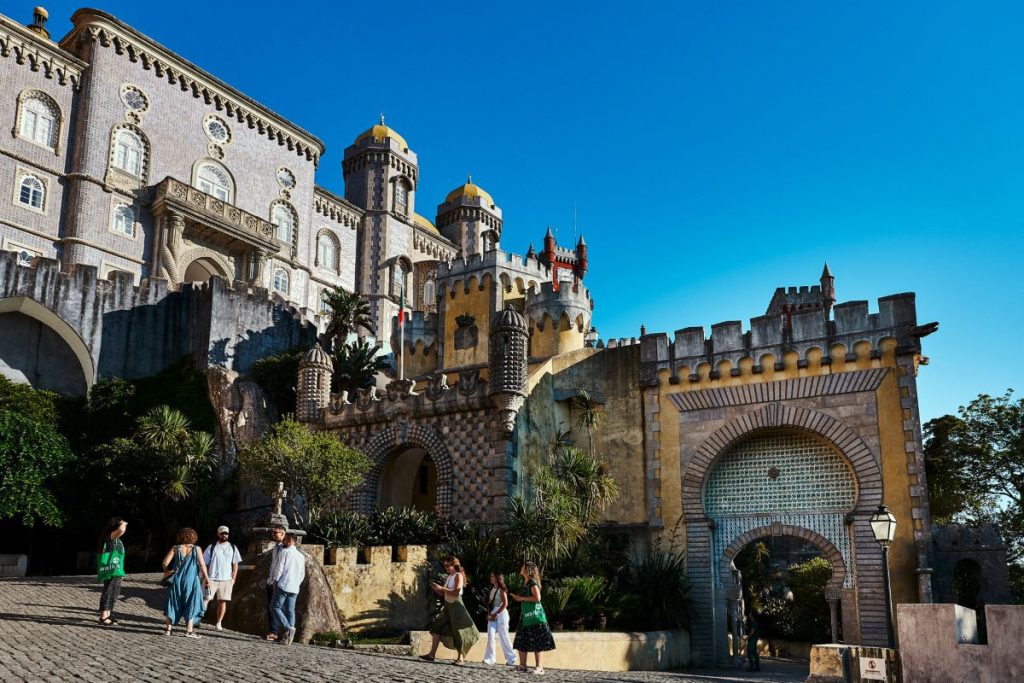
Beautiful inside and out
The interior of the palace has been restored to what it looked like when the royal family lived there, and you can tour the rooms for a glimpse into this era. But the outside of the palace is arguably even more interesting. Its exterior terraces and scenic walkways offer both an up-close look at the palace itself and panoramic views of its surroundings.
The palace grounds include over 200 acres of gardens, lakes, pathways, and plants imported from all over the world. There’s the Queen’s Fern Valley, featuring ferns from Australasia; the Camellia Garden, where dozens of species of East Asian camellias thrive; the Grotto of the Monk, with its tiled stone “throne”; and many other statues, structures, and natural wonders.
The grounds also include the three highest points of Sintra’s hills. The palace itself is located at the second-highest point. The third-highest is Alto do Chá, which boasts phenomenal views of the palace from afar. And the highest is Cruz Alta, named for the carved stone cross that marks it, where you’ll find incredible 360º views of the region.
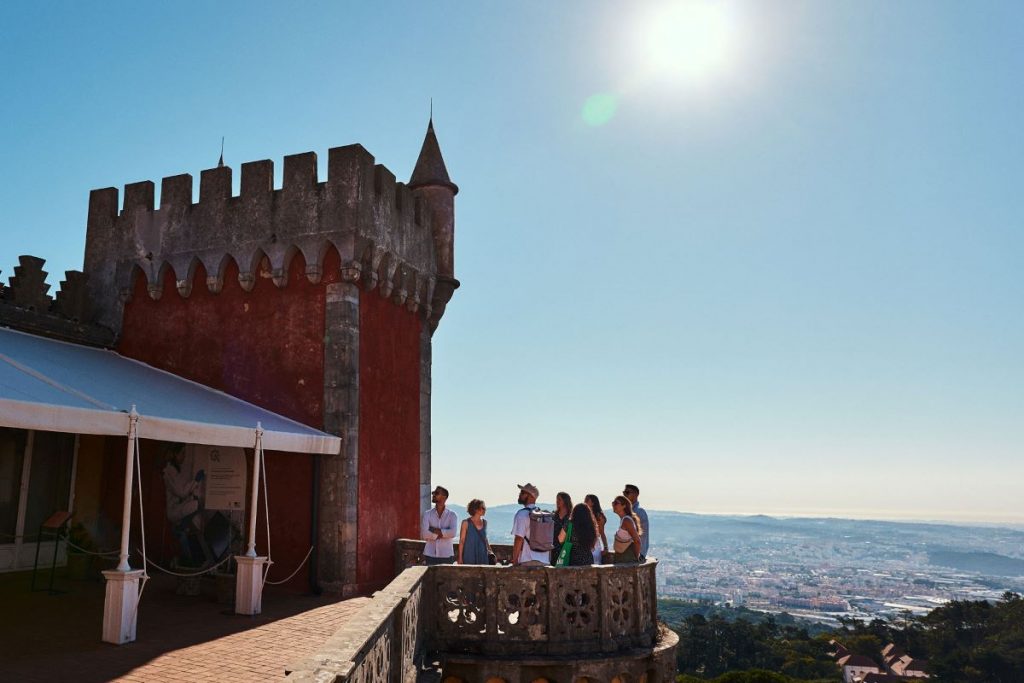
Practical tips for visiting the Pena Palace
The Pena Palace is relatively easy to reach from Lisbon on a day trip, whether you’re traveling by car or public transportation. You can take the train from Rossio Station to Sintra, and then either walk or take the local bus from the train station to the palace. The walk is doable but fairly challenging, as you have to hike up a steep incline from the historic center to the palace.
There are two types of tickets:
- Entrance to the park and palace, or to the park only. The latter is cheaper and includes access to the terraces and walkways around the building, but if you want to go inside, you’ll need the full ticket.
- We recommend buying tickets online to avoid long lines, and if you buy them at least three days in advance you’ll also get a small discount.
- If you go for the combined park-and-palace ticket, keep in mind that you’ll need to choose a 30-minute time slot for the tour of the palace itself. Make sure to arrive well in advance of your reserved time; it takes about half an hour to get from the main entrance to the palace entrance.
In order to fully enjoy the Pena Palace, we suggest setting aside a full morning or afternoon. The inside tour is fairly quick, but you’ll want enough time to take in the views from the terraces, explore the grounds, and climb up to at least one of the park’s stunning panoramic viewpoints.
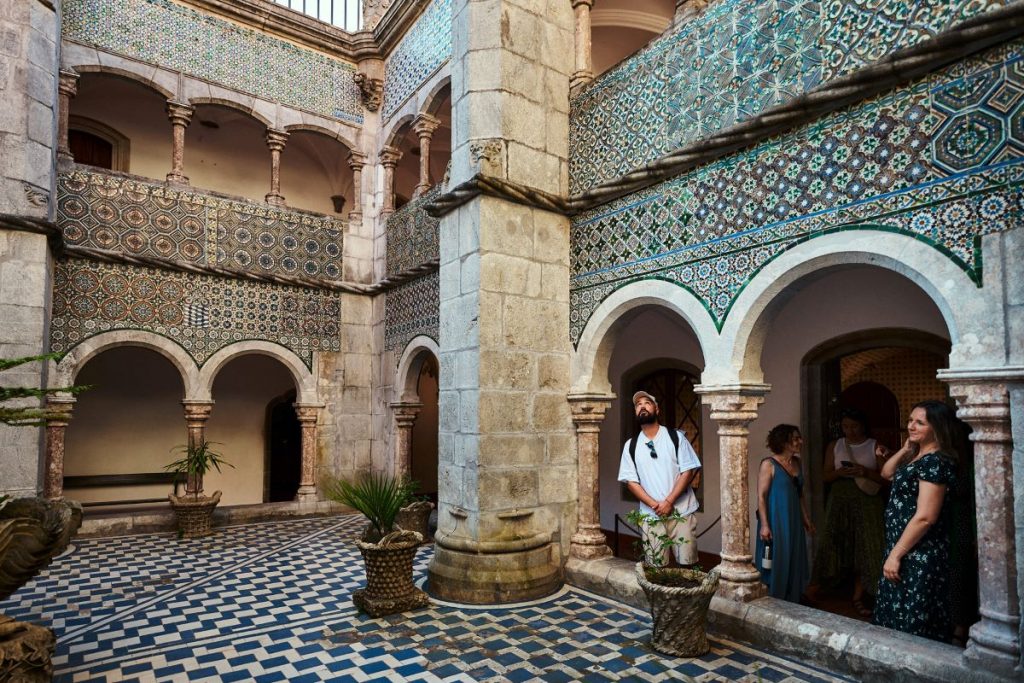
FAQs About Sintra and the VIP Sintra Tour from Lisbon
What makes the Pena Palace so special?
The Pena Palace is one of the most iconic landmarks in Portugal, known for its brightly colored exterior, eclectic architectural style, and breathtaking gardens. Built in the 19th century by King Ferdinand II, the palace blends Neo-Gothic, Neo-Manueline, and Neo-Moorish styles, making it a unique example of Portuguese Romanticism.
How do I get to Sintra from Lisbon on this tour?
The VIP Sintra Tour includes round-trip transportation from Lisbon to Sintra in an air-conditioned vehicle. You’ll be picked up at a central location in Lisbon, and you’ll travel comfortably through the scenic hills of Sintra.
What is the history of the Pena Palace?
The Pena Palace has a fascinating history, originally built as a 12th-century chapel, then transformed into a monastery in the 16th century. After the Liberal Revolution of 1834, King Ferdinand II purchased the abandoned monastery and transformed it into a summer residence, which he extensively restored. Today, it stands as a national monument and a symbol of Portuguese Romanticism.
Escape the city and uncover the fairy-tale charm of Sintra on our VIP Sintra Tour from Lisbon. Enjoy exclusive access, breathtaking palaces, and insider stories for a truly unforgettable day.
